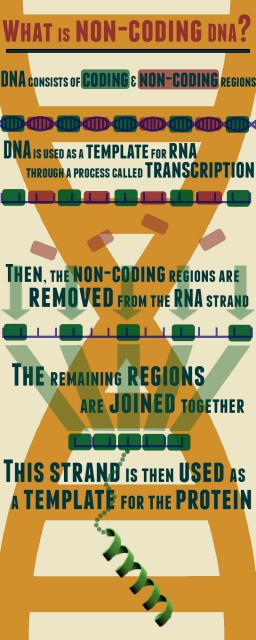The negative connotation surrounding non-coding DNA – the components of DNA that don’t encode protein sequences – is almost as ubiquitous as the genetic material itself. Despite constituting the vast majority of living organisms’ genomes, these long stretches of DNA have gained a bad reputation, often being referred to as ‘the stuff between genes’ and even ‘junk’ DNA. Scientists have only recently begun to unveil the significance of this seemingly nonfunctioning DNA, discovering that in the world of genetics, it is far from being ‘junk.’ One of the researchers working to re-invent the way we view non-coding DNA is Thomas Bureau, a professor in McGill’s molecular biology department.
Heading the Value-directed Evolutionary Genomics Initiative (colloquially referred to as “VEGI”), Bureau and his team of specialized researchers aim to pinpoint the functional and agricultural significance of non-coding DNA within several species of the Brassicaceae family, informally known as the mustard flowers. Bureau and his team primarily focus their studies on the model plant species Arabidopsis thaliana (commonly known as mouse-ear cress). Although Arabidopsis is viewed as nothing more than an everyday weed, it is a close relative of many economically important food crops such as cabbage, broccoli, cauliflower, and mustard. Through this research, Bureau hopes to not only better understand the significance of non-coding DNA in plants, but also identify specific regions of non-coding DNA that possess the potential for crop improvement.
Funded by Genome Canada and Génome Québec, the collaborative $5 million project between McGill and the University of Toronto is entering its fourth and final year. The first phase of VEGI involved determining the regions of Arabidopsis’ genome to study. Bureau and his team needed to isolate the genetic information that Arabidopsis shared with other members of the Brassicaceae family. This would allow them to extrapolate the information gained from studying Arabidopsis and apply it to essential food crops. Thus, a great deal of genome sequencing and comparative analyses were required to ‘weed’ out Arabidopsis’ ‘significant’ DNA (the DNA conserved among other members of the Brassicaceae family) from the ‘insignificant’. As Bureau stated in an interview with The Daily, “It has only now become apparent that some of those non-coding regions are important functionally.”
Now in the second and final phase of the project, Bureau has begun the process of constructing and performing experiments to shed light on the function of the non-coding DNA in not only Arabidopsis, but also various crop species. Utilizing cutting-edge genomic technologies, such as the McGill Plant Phenomics Platform (MP3 – a high-precision machine that provides researchers fast and automated measurements of complex phenotypic traits in plants), Bureau is able to monitor and evaluate Arabidopsis’ growth and development after mutating regions of its non-coding DNA. His findings hint at the extent to which non-coding DNA can affect a plant’s response to various abiotic (non-living) stresses. As he stated, “There is so much significance in non-coding DNA; a lot of the things we have found seem to be connected to traits such as drought tolerance, nitrogen use efficiency, cold and freezing tolerance, salt tolerance, and even tolerance to very toxic compounds like arsenic.”
Once completed, the information and knowledge gained from the VEGI will provide clearer instructions for effective crop breeding, ultimately allowing for the propagation of desired plant characteristics through a greater understanding of non-coding DNA’s important role in biological functions and development.


